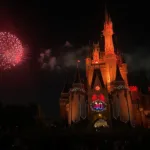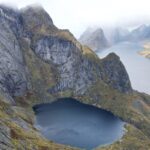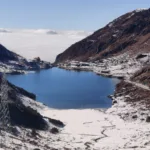Sikkim is 2nd smallest state in India, located in the northeastern part. It is a hidden gem in India that provides 3rd highest mountain Kangchenjunga views on the west side, snow-covered landscapes on the north side, a frozen lake on the east side, and beautiful temples situated on the top peak of mountains on the south side of Sikkim. Gangtok, the capital city of Sikkim, remains in the Centre of the State. Sikkim provides awe-inspiring experiences in all directions.

The people of Sikkim consist of different communities like Nepali, Bhutia and Lepcha. They intermingle freely to form a homogenous blend. Hindu Temples synchronise with Buddhist Monasteries, Churches, mosques and Gurudwara. It stands out as a premier destination, surpassing even the most frequented hill stations, as Sikkim offers unique experiences that eternally imprint themselves in our recollections.
GANGTOK

Gangtok, the capital of Sikkim, is an elevation of 1650m. The highlight of Gangtok lies in its renowned mall road, meticulously designed and contemporary. This picturesque town is known for its array of shopping centres, restaurants, street food, and hotels that grace both sides of the street. Make sure to savour the flavours of Thukpa and Momos while exploring the local market for a delightful shopping experience.


I visited Gangtok in the winter season, Mall road was covered with clouds and appeared like drizzle. Visitors should stay at least 1 full day and night at Gangtok to explore the beautiful place. The street is crowded and lively environment, its better to take stay which is walking distance from Mall road. You can also explore the famous Gangtok ropeway, flower garden, Chorten Stupa, Tashi viewpoint, and Monasteries.
TSOMGO/CHANGGU LAKE


Tsomgo Lake, also known as Changgu Lake, sits at an altitude of 3753m and is approximately a two-hour drive from Gangtok City, spanning 40km. Some parts of the lake remain frozen during the winter season. The breathtaking vista of the lake against the backdrop of snow-covered mountains is truly unparalleled. Due to its popularity, Changgu Lake draws large crowds. Visitors have the option to rent traditional attire, and the lakeside features traditional food stalls where one can relish local delicacies. Additionally, visitors can partake in a Yok ride for a unique experience.


Tromgo, translating to “a water source,” is situated 40km away from Gangtok, offering a scenic drive through stunning natural vistas and landscapes. Private vehicles and self-driving are prohibited, necessitating visitors to obtain a permit in advance, which can be arranged through a travel agency or hotel personnel. It is recommended to secure the Permit a day ahead of your planned travel to ensure a smooth experience.


Tsomgo Lake experiences partial freezing during winter and transforms into a verdant oasis in spring, adorned with an array of vibrant flowers. This phenomenon contributes to the lake’s reputation for its ever-changing hues throughout the seasons. It is advisable to leave in the morning as soon as possible from Gangtok to Tsomgo Lake, ensuring a timely return by 3 PM-4 PM due to the unpredictable nature of adverse weather conditions.
TSOMGO LAKE VIEWPOINT

Tsomgo Lake viewpoint, the best view I witnessed in Sikkim, is located while driving from Changgu Lake towards Baba Harbhajan Singh temple. It is a top view of the Lake where you witness frozen lakes, beautiful clouds, stunning mountains, and snow-covered roads in one frame. I was lucky because of the good weather and beautiful clouds which enhanced the beauty of view. The whole journey was very scenic and impeccable.
When we returned, it was getting dark and lightly raining. Snow blanketed both sides of the road, and the wind was fierce. As we opened the car window, the frigid air rushed in, freezing the interior. The centre of the road is clear because the military vehicles’ wheels are equipped with iron chains to cut through the ice. This feature not only aids in maintaining a clear path but also ensures a smooth journey for travellers.
YAKLA VIEWPOINT


The images above encapsulate the stunning essence of this panorama. We were fortunate to behold the ethereal sight of clouds enveloping the snow-clad peaks. Our driver hesitated to proceed beyond Tsomgo Lake due to heavy snow on the road and was informed by the police that passage beyond that point was restricted. However, after consulting with the CISF, we encouraged our driver to continue towards the Baba Harbhajan Singh Temple.
We achieved significant height with each kilometre we travelled due to the steep incline. Ultimately, we arrived at an altitude where the clouds aligned parallel with the road. We witnessed the blanket of clouds, originating amidst the mountains and extending to infinity. We stood at the roadside, and it felt like I was walking on clouds. The eye-catching view is much more captivating than any camera can capture.
BABA HARBHAJAN SINGH

Baba temple is one of the famous sightseeing points in Sikkim. This sacred site pays homage to Baba Harbhajan Singh, an esteemed soldier of the Indian Army, revered by fellow servicemen. It is situated at an altitude of 13123 feet. Upon arriving, I found the rejuvenating mountain air soothing to my heart and spirit, making it difficult to contemplate leaving this tranquil heaven.

Baba Harbhajan Singh appeared in the dream of his colleague in a few days after he went missing while guarding the border, then he informed his colleague where to find his body. The astonishing part is that his colleague discovered his body exactly where he foretold in the dream. It is said that his spirit still watches over the Indo-China border and guides soldiers. Subsequently, a temple was erected in his honour to commemorate his legacy.


The military canteen stands opposite the revered Baba temple, meticulously maintained. We arrived after a lengthy journey, finding respite at this stop. We had tea and samoosa, known to be a fatigue healer. Our vehicle suffered a tyre puncture during the journey, a common occurrence on hill station excursions. Hence, it is advisable to carry a tyre inflator for the car, as it is rare to find a maintenance service in hilly areas.
NAMACHI

Namachi is the southern district of Sikkim, known for its serene beauty. A visit to south Sikkim, especially with family, is highly recommended. Located at an elevation of 1675 meters above sea level, this tranquil locale offers a breathtaking experience. Atop the hill lies the Shiva temple, providing panoramic views in every direction, immersing visitors in a majestic mountainous panorama.

After waking up early in the morning, we had a light breakfast in Gangtok before heading to our first destination of the day: Namachi in south Sikkim, approximately 75 km away and a journey that could take up to two and half hours. While en route to Namachi, the first sight that caught my eye was a large statue of Lord Shiva, towering over the city skyline. This statue was so immense that it could be seen from a considerable distance. I felt eager to witness its grandeur up close when standing before it.

GURU PADMASAMBHAVA

Guru Padmasambhava, also known as Samdruptse Monastery, was revered in Tibet as one of the founding figures of Tibetan Buddhism. He arrived in Tibet in 749 A.D. and spent 54 years there. After exploring Namachi, our next stop was the Samdruptse Monastery, situated about 6km from the Shiva statue, requiring approximately 15 minutes to reach. This statue is equally impressive, and thanks to the pleasant climate, the surrounding atmosphere was delightful, providing us with a memorable experience. to learn more about the history of Guru Padmasambhava.
TATHAGATA TSAL

Tathagata Tsal, also called Buddha Park of Ravangla, located near the old-fashioned town of Rabong, is a sanctuary of peace and spiritual venerate. Tathagata is the language of Sanskrit and Pali, referring to Lord Buddha. Lord Buddha referred to himself as the Tathagata in the Pali Canon, underscoring his transcendence beyond human conditions and the cycle of suffering.

The statue of lord Buddha was constructed between 2006 and 2013 and marks a 130-foot-high statue of Buddha. It is nearly 30 km from Namachi and takes around an hour. The route is adorned with picturesque views, and upon arrival, we enjoyed a delightful meal. The park typically closes at 5:30 pm, but we were fortunate to gain entry after this time upon making a special request.

The statue radiates a brilliant glow even during the evening thanks to its exceptional lighting decoration. The park is huge, and our initial descent down numerous steps to enter the park, followed by the ascent to the temple, felt like a spiritual odyssey. Upon reaching the summit, we behold astonishing statues and beautiful mountain vistas. This place is a must-visit place in South Sikkim, with homestay conveniently available in the vicinity.
TRAVEL PLAN
Sikkim is best visited between March and May, or from October to December. The number of days you should spend depends on what you want to see and how much time you have. But ideally, 5 to 8 days are enough to explore.
How to reach – Reach at Bagdogra (IXB) airport and take a taxi to Gangtok. Another option by road is the nearest railway stations that are New Jalpaiguri (NJP) and Siliguri, both are nearly 120 km from Gangtok and are well connected to all the major cities.
Day 1 – Reach at Gangtok, visit Mall Road, and refresh yourself in the Hotel.
Day 2 – Explore Gangtok and the famous Gangtok ropeway, flower garden, Chorten Stupa, Tashi viewpoint, and Monasteries.
Day 3– Depart for East Sikkim early morning to visit Changgu Lake, Ykala viewpoint, Baba Harbhajan Singh temple, and return to Gangtok.
Day 4– Depart for South Sikkim to tour Namachi, Samdruptse Monastery, and Tathagata Tsal.
Day 5-6 – Journey to West Sikkim to behold the majestic Kangchenjunga in Pelling, explore Sangachoeling Monastery, visit Khecheopalri Lake, Yuksom, and more.
Day 7 to 9 – Depart for North Sikkim to explore Lachung, Lachen, Yumthang Valley, Gurudongmar Lake and more.
Taste Of Sikkim – Momo, Thikpa, Chhurpi, Gundruk, bamboo shoot curry, Laping, Masauyra Curry etc.
USEFUL LINKS
Book a cheap flight by using Skyscanner. It’s my favorite search engine. It scours websites and airlines worldwide, ensuring no stone is left unturned.
Google Flight is another excellent resource for finding a reasonably priced flight. By entering your nearest airport and typing “anywhere” as the destination, you can view the cheapest flights available from your location.
Book your accommodation by using Hostel World. It is an ideal option for finding cheap and highly-rated hostels for foreign trips.
For alternatives to hostels, try booking.com. It is a reliable platform for booking accommodations, including guesthouses, hotels, and apartments, at the most affordable rates.
This is also one of my favorites choice for both accommodation and flight bookings, particularly for domestic travel within India.
It’s a zero mark-up Forex travel card. It charges a minimal fixed amount for cash withdrawals from ATMs in other countries. Complimentary airport lounge access is also available. You can apply easily by installing the Niyo Global app.
Travel insurance provides coverage for injury, illness, COVID-19, and theft. It is comprehensive protection in case anything goes wrong. Travel insurance is compulsory in many countries.
Book a train and bus from Omino for an international trip. It provides all travel options in one place
One of the best places to start looking for cheap rental cars and great deals for international trips.
Redbus offers various bus services such as a chair, sleeper, AC, and Non-AC options. Redbus is India’s largest online bus ticketing platform.











It’s hard to find knowledgeable people on this topic, but you sound like you know what you’re talking about! Thanks
For seamless travel, choose Kingston Taxi for reliable transportation to and from Pearson Airport. Enjoy a stress-free ride with Kingston Airport Taxi, ensuring prompt and comfortable service.
Excellent post. I was checking continuously this blog and I am impressed! Very useful info specifically the last part 🙂 I care for such info a lot. I was looking for this certain information for a long time. Thank you and good luck.
I’m so glad you enjoyed the post, thank you!
Enjoyed looking through this, very good stuff, appreciate it. “We swallow greedily any lie that flatters us, but we sip little by little at a truth we find bitter.” by Denis Diderot.
Turn your event into a VIP experience with Miami Party Bus Services! From Wedding Party Bus Miami to a Sweet 16 Party Bus Miami, we deliver luxury and affordability. Book the Best Party Bus Rentals Miami and party in style.